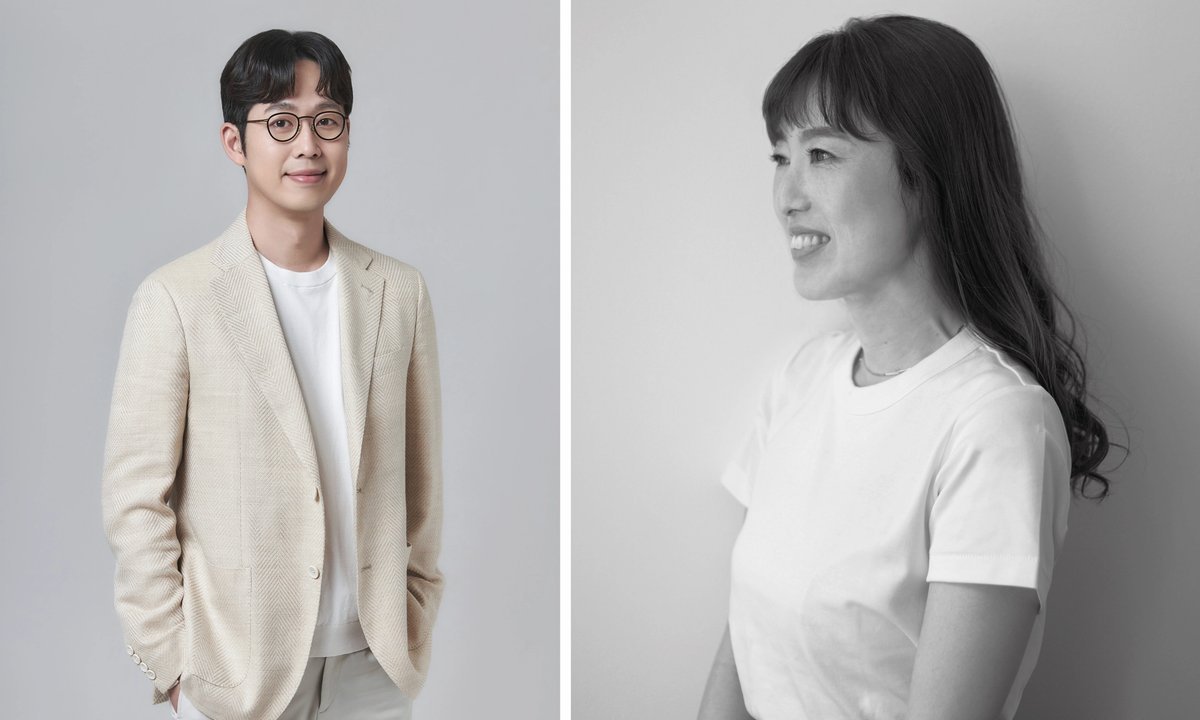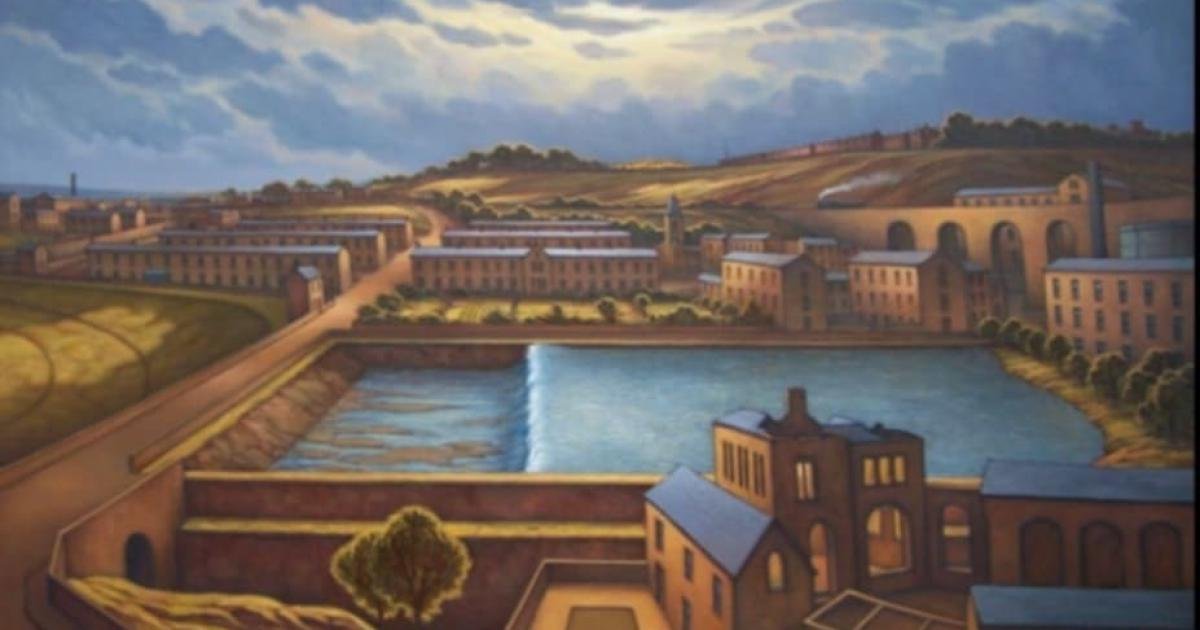Mike Smith meets the Ilkeston-born artist
From mid-February to late April, visitors to the first-floor exhibition space in Buxton Museum and Art Gallery will be able to enjoy an exhibition of paintings distinguished by their quality and diversity. The works on display will range from a painting of a construction site in a suburban street to a haunting portrait of a distorted human torso and will include evocative depictions of Peak District landscapes, ranging in style from totally abstract to semi-abstract to representational.
At first glance, visitors might get the impression that they are entering a mixed exhibition of works by artists representing several different schools of painting, but they will soon realise that the pictures have much in common, not least their vibrant geometry, and that many of them are characterised by their dramatic use of perspective. In fact, all the images will be the work of one man: Gary Sampson, a painter who has never been afraid to alter his style to suit his subject.
Hoping to discover the reasons for this chameleon-like approach, I headed for the artist’s studio in the village of Elton. My visit took place in late autumn. Had I arrived a few weeks earlier, I would have found Gary working at his pottery kilns rather than at his easel. Not content with shifting from style to style, this versatile artist moves between painting and ceramics according to the seasons: working on his pictures from late autumn to early spring and on his pottery in the winter months.
The reason for these seasonal preferences is not hard to find. His kilns are housed in an unheated former cow shed, where the temperature is a testament to Elton’s reputation as one of England’s coldest villages, whereas his painting studio is located in the main body of the cosy cottage he shares with his wife, Valda. Explaining the changes in subject matter, Gary said, ‘The strongest influence on my work has always been my local environment. Because I paint scenes close to where I am living at any one time, my pictures reflect the geographical moves I have made at different stages of my life.’
Gary was born and brought up in Ilkeston. At the age of 16, he left school and enrolled at Derby District College of Art, where he remained for five years, studying for a degree in Fine Art, which included a two-year course in Ceramics. He said, ‘I have always been grateful for the sound traditional training I received, especially classes in anatomy and an emphasis on drawing from life.’
After graduating, Gary returned to Ilkeston and found fulfilment in painting selected views of the town – ‘Prefabs’ and ‘Lord Haddon Road’ are typical works from that time. Like many of his fellow students, he had ambitions to live entirely by his art but, realising he would need a reliable income, he embarked on a teaching career that would last for 41 years and culminate in his heading a large creative arts faculty in a secondary school. He also gave evening classes in ceramics and the history of art, but continued to produce his own paintings whenever time allowed.
Gary married in 1960 and went to live on a new estate in Darley Abbey, a rapidly expanding suburb of Derby where new houses were springing up all around him. Many artists would have dismissed these surroundings as unsuitable subjects for paintings, but Gary was inspired by them. A drawing in ink and crayon entitled ‘Wimpey’s Wonderland’ and a painting called ‘95% Mortgage’, which is part of the permanent collection at Buxton Museum and Art Gallery, date from this period.
As is evident in a picture from 1967 called ‘Catherine’, Gary paints not only what is close to him physically, but also what is close to him emotionally. Explaining how this work came about, he said: ‘By this time, my first wife and I had moved to Ashover. Catherine, our first child, was 18 months old and had just been diagnosed with a congenital hip condition. Her treatment involved her legs being encased in plaster and held in place like those of a frog. One day, I had been applying pigment with a palette knife, without any real idea of what I was trying to achieve, when I suddenly realised that a picture was emerging of Catherine encased in plaster. This was the first of many pictures of her.’
Happily, Catherine recovered completely from her condition. Gary moved on to other subjects and became a member of the Midlands Group of Artists, who had their own gallery near Nottingham Playhouse and organised various touring exhibitions of work by their members. His paintings were exhibited quite widely in the East Midlands and in the principal cities of the North of England.
In 1973, Gary married for the second time. During their search for a place to live, he and his new wife, Valda, came across a cottage by the side of a narrow lane near Elton. The building had been empty for 18 years and was in desperate need of renovation, but the couple could see potential that so many others had failed to appreciate. They duly purchased the property and, together with the children from their first marriages, moved into a caravan while a lengthy restoration took place.
It might be thought that Gary would now have a perfect opportunity to pursue his art: a pottery studio in the old cow shed, complete with kilns built by his own hands, a sizeable painting studio in the cottage, a wife to provide him with enormous encouragement and support, and a wonderful panoramic view from the house of copses, crags and rolling hills that would surely provide inspiration to an artist who had always painted what was close to home.
However, the artist was faced with two problems: one totally understandable; the other much less so. Firstly, the demands of his job became ever more time-consuming, particularly when he became a head of faculty. Secondly, for whatever reason, he struggled to find ways of interpreting the stunning Peak District landscape on his doorstep. In fact, he abandoned painting for a time and turned his attention to ceramics, producing functional pots that proved so popular at the National Trust shop at Ilam Hall that he could barely cope with the demand.
He said: ‘I would go out with my sketch pad and my watercolours and make preliminary pictures of the landscape, but I couldn’t convert them into satisfactory paintings. Eventually, I found a way of synthesising the various elements in the landscape by using a semi-abstract style. This approach even gave me the confidence to submit a semi-abstract painting of Durwood Rocks for the 1983 Derbyshire Open. It was awarded first prize and is now in the permanent collection at Buxton.’
Gary took early retirement in 1993 and has been able to live as a full-time painter and ceramicist ever since, always with the strong support of his wife, now retired from her post as a headteacher and able to find time to create her own paintings. It was Valda who encouraged him to apply for the one-person retrospective, which reveals that Gary has largely abandoned semi-abstract painting in recent years and returned to his earlier representational style as a means of capturing the essence of local scenes. Regardless of date and style, every picture in the show is proof that this talented artist has rarely felt the need to look beyond his immediate surroundings in search of artistic inspiration.
Gary Sampson’s one-man show, ‘Fifty Years – A Personal View’, runs at Buxton Museum and Art Gallery from 15th February to 21st April, with opportunities to meet the artist on Saturday 15th February and Saturday 22nd February (2 to 4pm). He also exhibits with Peak District Artisans.





